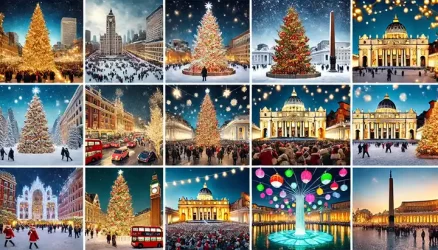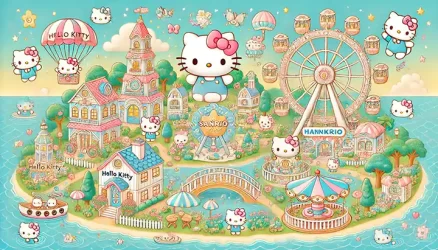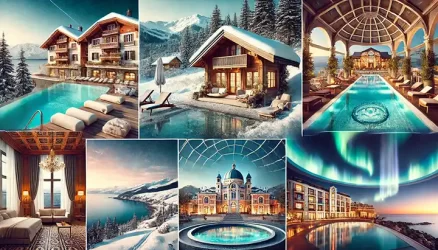12 Amazingly Clear Lakes and the Reason They Are So Clear
Lakes, according to some, are one of nature’s “most stunning expressions.” Few things are more peaceful than a calm, clear blue lake in the midst of lush wilderness. There are many lakes on this planet, and while some are beautiful and pristine, others are only worth passing through. So, without further ado, here are 12 incredibly clear lakes, along with an explanation of why they are so clear.
#1 Lake Tahoe, USA

Lake Tahoe is a freshwater lake that straddles the border between Nevada and California. It is one of the world’s clearest lakes. The visibility here is 100 feet.
Its clarity is due to the fact that 40% of raindrops fall directly into the lake. The remaining 60% drains through nearby marshes, which filter the water. Shipwrecks from the 1920s and 1930s can be seen sitting in a boat on the lake’s surface.
#2 The Blue Lake, New Zealand

New Zealand is well-known for its stunning natural beauty. You are surrounded by beautiful lakes and memorable mountainous terrains the moment you leave any city there. But New Zealand is also known for having the world’s clearest lake. The visibility depth of Blue Lake is between 70 and 80 meters (roughly 230 to 260 feet).
This lake is also known as the “clearest body of natural freshwater in the world.” According to experts, the water in Blue Lake is similar to distilled water. The lake’s clarity, according to researchers, is due to a specific underground passage that filters the water as it enters from Lake Constance. This is also why its natural color, blue-violet, is visible here.
#3 Melissani Lake, Greece

Melissani Lake runs through Melissani Cave. It is located on the island of Kefalonia, northwest of the town of Sami, and is well-known for its crystal-clear water. Veteran visitors comment that the water is so clear that the boats appear to float in the air. According to Greek mythology, this cavernous space is a nymph’s den. On a clear day, the sun’s reflection reflects off the clear sea-green water, creating a striking effect.
#4 Crater Lake, USA

Crater Lake in Oregon is the world’s ninth deepest lake. It is also known for its beautiful blue color and is one of the main tourist attractions of Crater Lake National Park, which is located in the state’s south-central region. The clarity of the lake, which was formed by the collapse of massive Mount Mazama 7,500 years ago, can be attributed to the rain and snow from which the lake water originates. Because there are no other waterways or entrances to the lake, no debris or mineral deposits flow through it, preserving its rich hue.
#5 Flathead Lake, USA

The famous Flathead Lake is the largest in the state of Montana in terms of surface area. It is also the cleanest lake in the area. The renowned clarity of this lake is the result of low nutrient levels, which allow for algal growth.
Do you enjoy fishing? This lake is well-known for its northern pike, sturgeon, trout, whitefish, and yellow perch populations. If you want to kick it on a sandy beach or participate in watersports, head to the nearby tree-lined beach. Fishing, powerboating, sailing, swimming, waterskiing, and other activities are available here.
#6 Lake McKenzie, Australia

Lake McKenzie in Australia, also known as the “Jewel of Fraser Island,” is so clear that you can see your reflection in it. This is a well-known perched lake. It was created by sand gradually cementing aluminum, iron, and various organic matter into a single layer of material above actual sea level.
It is also worth noting that the lake is acidic. As a result, it is not suitable for all species. In fact, it is home to a fragile ecosystem, making it difficult for healthy aquatic life to thrive. The maximum visibility here is 50 meters. The lake’s impermeable bottom layer contributes to its clarity.
#7 Moraine Lake, Canada

Majestic Moraine Lake is located in the lush Valley of the Ten Peaks of the Canadian Rockies. Glaciers are the only source of water in the lake basin. It is well-known for its clear blue hue, which varies according to season, angle of light on the lake, and time of day. Some say that summer is the best time to visit Moraine Lake. Because of this, the lake has a strikingly clear blue reflection as natural light refracts from the lake’s floor.
#8 Lake Mashū, Japan

Lake Mashū is an endorheic crater lake located in Japan’s Akan Mashū National Park on Hokkaido Island. Locals call it “the Devil’s Lake,” possibly because it formed in the caldera of a potentially active volcano. Not only is it a popular tourist destination, but it is also a UNESCO World Heritage Site.
Lake Mashū is cited by some travel writers as a magnificent example of nature’s splendor. It has also been dubbed “the world’s clearest lake.” Its clarity is due to a variety of factors. There are no truly significant inlets or outlets on the lake. As a result, it is free of debris carried by local rivers and is primarily fed by rainfall.
#9 Lake Blausee, Switzerland

Lake Blausee, arguably Switzerland’s most famous crystal-blue lake, is primarily fed by numerous underground springs. The water is blue-green in color and completely clear. Boulders and sunken tree trunks can be found more than 12 meters underwater. The “mineral-rich mountain spring water” found here is credited with the water’s clarity.
#10 Torch Lake, USA

Torch Lake in Michigan is well-known for its green-blue, crystal-clear water. This fjord-like bay was formed by glaciers during the last ice age. The geology of this clear water is responsible for its color. Tourists frequently comment that it looks like the Caribbean Sea, complete with sandbars. Long ago, the formation of the sandbar across the lake’s mouth separated it from Lake Michigan. It is now the state’s second-largest lake.
#11 Lake Bacalar, Mexico

Do you speak Spanish? It could be useful when visiting this lovely lake or freshwater lagoon in the state of Quintana Roo. This is the country’s second-largest lake, and it has a sandy white bottom.
It is primarily fed by a variety of underground rivers. Throughout the day, the lake’s color shifts from indigo to turquoise. As a result, it is known as the “lake of seven colors.”
#12 The Five-Flower Lake, China

The well-known multi-colored Five-Flower Lake is a shallow lake crisscrossed with fallen, ancient tree trunks. The lake’s dominant colors are blue, green, and yellow. It is located in Sichuan’s Jiuzhaigou National Park.
Visit whenever you want because it does not freeze in the middle of winter and the water level does not rise during the summer months. The small, crystal-clear lake remains unchanged regardless of seasonal heat or a lack of rain. The water is so clear that you can see the tree trunks mentioned earlier along the bottom. The lake’s clarity is due to the presence of calcium carbonates and hydrophytes. Residents frequently refer to the lake as “a piece of mirror that fell from a goddess’ hands.”



















